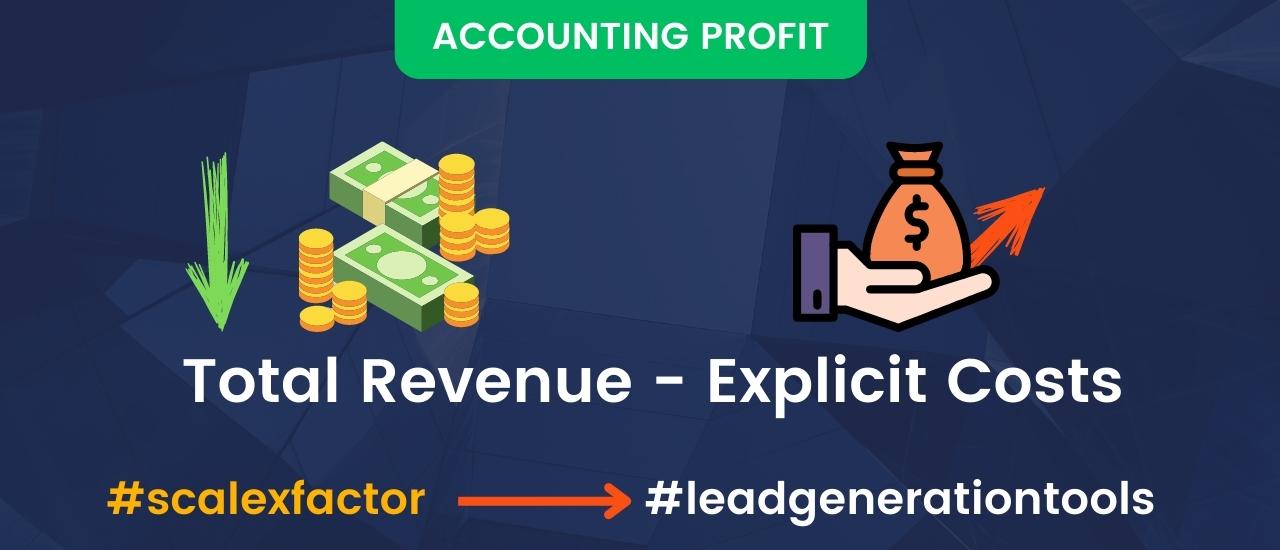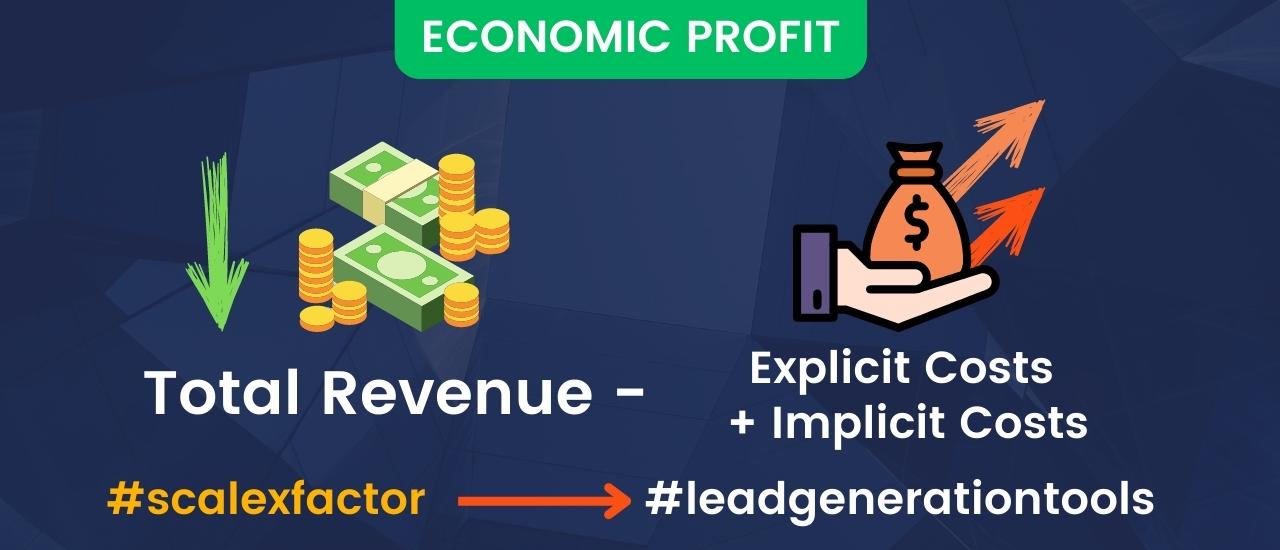Have you ever wondered what sets successful businesses apart from the rest? The answer lies in understanding the intricacies of accounting profit and economic profit. These two financial concepts play a significant role in determining a company’s profitability and overall performance. In this article, we will explore the differences between accounting profit and economic profit in a language that is easy to grasp, without overwhelming you with complex jargon.
Table of Contents
| Sr# | Headings |
|---|---|
| 1. | What is Accounting Profit? |
| 2. | Calculating Accounting Profit |
| 3. | The Significance of Accounting Profit |
| 4. | What is Economic Profit? |
| 5. | Factors Affecting Economic Profit |
| 6. | The Importance of Economic Profit |
| 7. | Accounting Profit vs. Economic Profit: A Comparison |
| 8. | Which Metric Should Businesses Prioritize? |
| 9. | Utilizing Accounting and Economic Profit for ScaleXFactor |
| 10. | How to Enhance Accounting and Economic Profit? |
| 11. | Rethinking Business Strategies for Optimal Profitability |
| 12. | Diving Deeper into Lead Generation |
| 13. | Understanding the ScaleXFactor in Business |
| 14. | The Role of Profit in Business Expansion |
| 15. | Conclusion |
1. What is Accounting Profit?
Accounting profit is the fundamental financial metric used by businesses to determine their profitability within a specific accounting period. It represents the difference between a company’s total revenue and its explicit costs, which include expenses such as raw materials, wages, utilities, and other operational costs. In essence, accounting profit is a vital measure that gives business owners an overview of their financial performance.
2. Calculating Accounting Profit
To calculate accounting profit, simply subtract all explicit costs from the total revenue generated during a particular period. The formula is as follows:
Accounting Profit = Total Revenue – Explicit Costs
3. The Significance of Accounting Profit
Accounting profit provides a quick snapshot of a company’s financial health. Business owners and investors often refer to this metric to assess whether a venture is generating income or incurring losses. While it offers valuable insights into a company’s short-term financial success, it does have some limitations, as we will see later.
4. What is Economic Profit?
Economic profit, on the other hand, delves deeper into a company’s financial standing. It takes into account not only explicit costs but also implicit costs. Implicit costs are the opportunity costs incurred by using resources for a particular venture instead of the next best alternative. In simpler terms, economic profit evaluates the total cost of doing business, including both explicit and implicit costs.
5. Factors Affecting Economic Profit
Economic profit can be influenced by several factors, such as changes in market demand, competition, and external economic conditions. Additionally, managerial decisions and resource allocation also play a crucial role in determining economic profit.

Understanding these factors can help businesses make informed decisions to enhance their profitability in the long run.
6. The Importance of Economic Profit
Unlike accounting profit, economic profit provides a more comprehensive view of a company’s performance. It enables business owners to understand the true cost of their operations and whether their ventures are genuinely profitable.

By considering implicit costs, economic profit guides businesses towards optimizing their resource allocation and maximizing their overall efficiency.
7. Accounting Profit vs. Economic Profit: A Comparison
The primary distinction between accounting profit and economic profit lies in their scope of evaluation. Accounting profit focuses solely on explicit costs, while economic profit takes both explicit and implicit costs into account. Let’s illustrate the difference with an analogy:
Imagine you run a lemonade stand, and your accounting profit shows a decent income. However, when you consider the value of your time spent running the stand (an implicit cost) and compare it to other opportunities, you realize that the economic profit is significantly lower.
8. Which Metric Should Businesses Prioritize?
Both accounting profit and economic profit serve essential purposes for businesses. Accounting profit helps monitor immediate financial performance, while economic profit provides a more in-depth analysis of long-term profitability. Therefore, wise entrepreneurs consider both metrics to get a comprehensive view of their ventures’ success and identify areas for improvement.
9. Utilizing Accounting and Economic Profit for ScaleXFactor
For businesses aiming to scale up, understanding accounting and economic profit is crucial. ScaleXFactor, a concept encompassing strategies for business growth, requires evaluating the financial implications of expansion. By analyzing accounting and economic profit, entrepreneurs can make informed decisions on when and how to scale their operations for maximum profitability.
10. How to Enhance Accounting and Economic Profit?
To boost both accounting and economic profit, businesses can adopt various strategies:
- Cost Optimization: Identifying and reducing unnecessary expenses to increase accounting profit.
- Innovation and Efficiency: Emphasizing innovative practices and improving efficiency to enhance economic profit.
- Pricing Strategies: Analyzing market conditions and competition to set optimal prices that maximize profit margins.
11. Rethinking Business Strategies for Optimal Profitability
Successful entrepreneurs continuously reassess their business strategies to stay ahead of the competition. By periodically analyzing accounting and economic profit, they can adapt to changing market dynamics, maintain a competitive edge, and achieve optimal profitability.
12. Diving Deeper into Lead Generation
Lead generation is a pivotal aspect of any business. It involves attracting potential customers and converting them into actual buyers. An efficient lead generation strategy can significantly impact both accounting and economic profit. Understanding your target audience and employing the right marketing tactics can lead to substantial revenue growth.
13. Understanding the ScaleXFactor in Business
ScaleXFactor represents the potential for business expansion and growth. To capitalize on this factor, entrepreneurs must prioritize economic profit as a guiding metric. ScaleXFactor-driven growth ensures that businesses expand sustainably while maintaining a positive economic profit.
14. The Role of Profit in Business Expansion
Profit serves as the lifeblood of business expansion. It fuels investments in research and development, market penetration, and infrastructure. By carefully managing accounting and economic profit, businesses can ensure successful expansion and longevity.
15. Conclusion
In conclusion, accounting profit and economic profit are two vital metrics that play a crucial role in a company’s financial evaluation. While accounting profit offers a snapshot of immediate financial success, economic profit provides a more comprehensive understanding of long-term profitability by considering implicit costs. To achieve sustainable growth and success, businesses must strike a balance between both metrics, effectively utilizing them for strategic decision-making.
FAQs
- What is the main difference between accounting profit and economic profit?
- Accounting profit only considers explicit costs, while economic profit factors in both explicit and implicit costs, including opportunity costs.
- Why is economic profit often lower than accounting profit?
- Economic profit considers opportunity costs, which reduce the overall profit figure compared to accounting profit.
- How can businesses improve their lead generation strategies?
- Businesses can improve lead generation by understanding their target audience, leveraging digital marketing channels, and offering valuable incentives.
- What role does scalexfactor play in a business’s growth?
- Scalexfactor represents a unique competitive advantage that allows a business to grow rapidly and sustainably.
- How can businesses balance short-term profitability and long-term growth?
- Businesses can achieve this balance by using both accounting and economic profit metrics to make well-informed decisions that focus on value creation and profitability.




